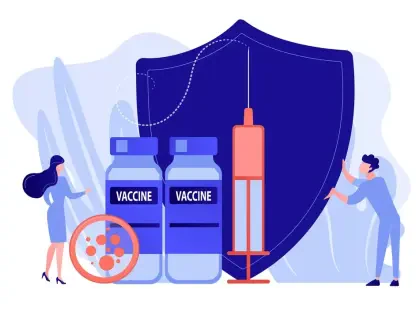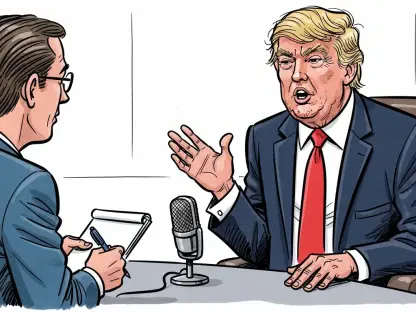In today’s rapidly evolving digital landscape, the public sector is at a crossroads, facing unprecedented changes brought about by artificial intelligence. Donald Gainsborough, a leader in policy and legislation and the head of Government Curated, offers his insights into this transformative era. In this interview, we delve into the multifaceted impact of AI on public sector jobs, exploring both the challenges and opportunities it presents, and gaining expert perspectives on navigating the future of government work.
How has AI changed the landscape of public sector jobs in recent years?
AI has significantly altered the public sector employment landscape by reshaping many roles rather than eliminating them. While some functions are streamlined, the technology necessitates new positions centered around more advanced skills, leading to a shifting focus from routine tasks to roles requiring analytical and strategic thinking. This transition challenges traditional job models as governments leverage AI to enhance efficiency and service delivery.
Can you explain why AI might seem threatening to public sector employees now more than ever?
The threat perceptions among public sector employees primarily stem from the large-scale automation rhetoric and significant job cuts in government sectors. The rapid advancement of AI technology casts uncertainty over job security, particularly in roles that consist of repetitive tasks. Despite reassurances of AI as a tool rather than a replacement, the sheer speed of technological advancements raises legitimate concerns about future workforce relevancy.
How do you compare the current concerns about AI with the ones from previous technologies like office automation and robotics?
Historically, each technological leap—from office automation to robotics—sparked fears similar to those we see with AI today. What sets AI apart is its adaptive learning capacity and the scale of its potential impact. Unlike past technologies, AI has the ability to not only take over mundane tasks but also learn and improve autonomously, pushing the boundaries further into decision-making spheres that were previously considered uniquely human.
What are some of the specific roles in state and local government that are most at risk due to AI automation?
Entry-level administrative roles, routine data processing, basic customer service positions, and manual inspection jobs are particularly susceptible to AI automation. These roles entail repetitive processes that AI can efficiently handle, leading to a potential reduction in hiring for such positions. It’s crucial for those in at-risk roles to seek opportunities for skill development in areas AI cannot readily replace.
What new positions do you foresee emerging in the public sector as a result of AI integration?
As AI becomes more integrated, roles such as AI system administrators, data governance specialists, and human-AI collaboration managers will emerge. Further, opportunities in digital transformation, citizen experience design, and AI ethical oversight will require human oversight and creativity, showcasing jobs where humans work alongside AI, enhancing its capabilities in ways machines alone cannot achieve.
How might the application of AI affect the hiring process and overall staffing levels in government?
AI applications could streamline the hiring process by handling initial resume screenings and performing routine administrative tasks, allowing HR professionals to focus on strategic workforce planning. While AI may reduce the need for some entry-level positions, it will simultaneously create demand for advanced roles, balancing overall staffing levels with a shift towards roles that require higher cognitive skills.
What role does training and retraining play in the transition to more AI-centric job functions?
Training and retraining are vital as they enable current employees to adapt to AI integration by acquiring new skills relevant to emerging roles. Effective retraining programs can mitigate job displacement risks by equipping workers with the competencies needed for new job functions, thereby fostering a smoother transition for both employees and employers in adapting to technological advancements.
How are governments preparing to manage the challenges associated with AI governance and ethics?
Governments are beginning to establish comprehensive frameworks for AI governance and ethics, focusing on transparency, accountability, and citizen engagement. These frameworks aim to ensure AI’s responsible deployment in public services, addressing ethical concerns and establishing regulatory standards that protect both public interests and individual rights.
How important is the vendor community to public sector entities in implementing AI technologies, and what challenges do they face?
The vendor community is crucial for public sector AI implementation as they provide the expertise and technology resources that governments may lack internally. However, challenges such as aligning vendor capabilities with specific governmental needs, negotiating cost-effective solutions, and ensuring mutual understanding of ethical standards are critical areas where public entities must be diligent.
What are the key areas within state and local governments where AI applications are currently being initiated?
AI is finding its foothold in administrative functions like document processing, regulatory compliance, data analysis, and customer service operations. These areas benefit from automation by improving efficiency and reducing costs, enabling governments to deploy resources more strategically and enhance service quality for citizens.
In your opinion, how could the digital divide and skill-based inequalities be exacerbated by the rise of AI in government work?
AI can potentially widen the digital divide and exacerbate inequalities, as access to technology and technical skills varies among the workforce. Those without the necessary digital literacy may find themselves at a disadvantage, underscoring the need for inclusive policies and education programs to bridge these gaps and ensure equitable participation in AI-driven job markets.
What ethical considerations should be taken into account when deploying AI in the public sector?
Deploying AI in public sectors requires careful consideration of privacy, bias, transparency, and accountability. Ensuring AI systems are fair, unbiased, respect individual rights, and are accountable to public scrutiny is crucial to maintaining public trust and ensuring ethical compliance in automated processes and decision-making.
How can government leaders ensure the responsible deployment of AI in the coming years?
Government leaders can promote responsible AI deployment by establishing robust ethical guidelines, fostering collaboration with diverse stakeholders, and investing in workforce development. Prioritizing transparency and inclusive practices will also ensure AI integrates smoothly into public services while addressing societal impacts effectively.
What lessons from history about automation can be applied to today’s rapid advancement with AI?
Past experiences with automation teach us that technological advancement can lead to economic growth and job transformation rather than mere reduction. Keeping a long-term perspective while emphasizing workforce adaptability and skill development ensures societies can successfully navigate transitions, harnessing technology for positive, inclusive progress.
Why is strong leadership crucial in navigating the transition to more AI-driven government services?
Strong leadership is key as it provides direction, allocates resources effectively, and fosters a culture of innovation while maintaining public trust. Leaders must navigate the complexities of AI while ensuring ethical integrity and social responsibility, guiding society through technological evolution without sacrificing core governmental values.
Can increased reliance on AI affect the public’s trust in government, and if so, how should this be addressed?
Reliance on AI could challenge public trust if transparency and accountability are not prioritized. To address this, governments must ensure clear communication about AI’s role, maintain oversight of automated operations, and engage with citizens to address concerns and expectations, thereby fostering an environment of trust and collaboration.
How do you envision the government employment landscape changing in the next five years due to AI?
In the next five years, we are likely to see a shift in the government employment landscape where traditional roles evolve, emphasizing skills complementary to AI capabilities. Job descriptions will increasingly require digital literacy and adaptability, creating a dynamic workforce capable of leveraging technology to enhance public service delivery, ultimately leading to more effective governance and improved citizen experiences.









